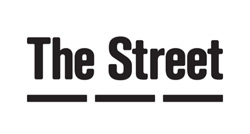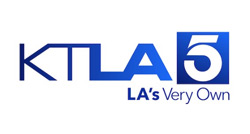
The function of the Form 433-A (OIC) is to determine the appropriate offer amount based on the taxpayer’s assets, income, expenses, and future earning potential. Generally, the value of a taxpayer’s assets is based on the liquidation (quick-sale) value. The value of a taxpayer’s income is based on the taxpayer’s gross pay, net business income, child support, alimony, rental income, and/or any other additional income sources. The monthly allowable expenses are deducted from the gross income to determine the monthly excess income figure.
The calculated monthly excess income figure is the amount the IRS considers a taxpayer has available to make monthly payments to the IRS. In determining a taxpayer’s excess income the IRS will routinely disallow any expense claimed as part of a taxpayer’s Form 433-A (OIC) excess income calculation that is not directly related to the taxpayer’s, or his or her family’s, health, welfare or sustenance. Additionally, the IRS will further limit the food, clothing, housing, utilities and transportation claimed on the Form 433-A (OIC) by a taxpayer to the lower of the taxpayer’s actual expenses or the amounts allowed for these expenses under a set of national and local expense standards called the Collection Financial Standards. The standards are broken down by the number of people in a family and monthly gross income.
The current Collection Financial Standards can be reached via this hyperlink:
Because of the aforementioned limitations on a taxpayer’s actual expenses, the final IRS adjusted excess income calculation arrived at on Form 433-A will in most instances make it appear from the IRS’s perspective that the taxpayer has extra money available to service IRS debt. Quite often from the taxpayer’s perspective they are barely paying their bills or worse yet are upside down each month. Because the IRS adjusted excess income calculation becomes the foundation for calculating a taxpayer’s minimum offer, analyzing a taxpayer’s expenses using the IRS’s collection financial standards quite often produces very strong emotional reactions where a taxpayer is contemplating making an offer in compromise.
However, the Internal Revenue Service announced another expansion of its “Fresh Start” initiative on May 21, 2012 by offering more flexible terms to its Offer in Compromise program. Thus, the IRS now has new, less strict National Standard tables for housing, transportation, and household expenses and is therefore accepting higher costs than before. Furthermore, a certain percentage of credit card payments can now be included as a miscellaneous expense when allowable. Delinquent state and local income taxes and student loan payments are also now allowable expenses when calculating your Offer in Compromise.
The Form 433-A (OIC) Collection Information Statement absolutely must show all assets and income available to the taxpayer. However, the equity in income-producing assets in a viable on-going business is not considered when adding the value of total assets to disposable income. The IRS offer investigator will use this information to evaluate a taxpayer’s offer and will routinely ask the taxpayer to update it or verify certain financial information contained on it several months after submission of the original offer (which is another guaranteed source of aggravation in this process). The 433-A (OIC) must be filled in completely because the IRS routinely returns offer packages that are incomplete. The Taxpayer should annotate any items that do not apply to them with “N/A” and must provide all the information required to support their 433-A (OIC). The items of documentation required to be submitted with the 433-A (OIC) are clearly indicated on the collection information statements under the signature blocks.
The following documentation is required to support either the assets or the income and expenses listed on the 433-A (OIC):
- Bank Accounts-last three months of monthly statements.
- Charge Accounts-last statement of each one.
- Real property-deed and current monthly payment statement from mortgage company.
- Life insurance-copy of policy, or statement of insurance company as to available loan value.
- Securities-any statement of current value.
- Vehicles-copy of title, plus statement from lien holder as to payoff amounts and monthly payments.
- Other assets-statement of value by qualified person as to liquidation value.
- Wages and other income-last three pay stubs or other evidence of income.
- Rent-canceled checks.
- Utilities-three to six months of bills.
- Medical, estimated tax, and court-ordered payments-canceled checks and copies of the court orders.
Additionally the taxpayer must attach following documentation to their 433-A:
- Copy of the taxpayer’s most recent tax return (Form 1040, 1040A, or 1040EZ with all schedules)
- Proof of all transportation expenses for the last three months
- Proof of all health care expenses for the last three months
- Kelly Blue Book Report showing the fair market value of the taxpayer’s vehicles including an explanation as to what condition the taxpayer’s vehicles are in
- For real estate, include either a recent appraisal of the actual property or a report from a real estate agent showing recent comparable sales












